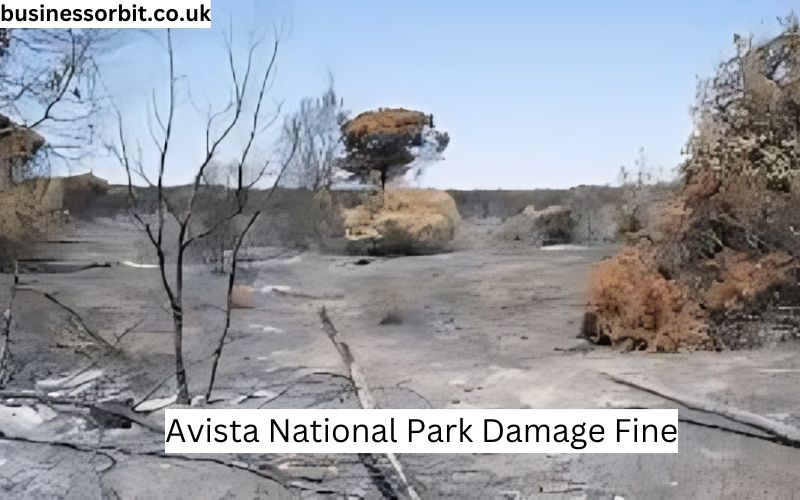National parks, particularly those like Avista National Park, represent an incredible and invaluable resource, both from an ecological standpoint and as a public space that promotes recreation and education.
The potential for damage to these parks is significant, not just from industrial activities but also from individuals or groups who may disregard park rules. In response, the legal and financial frameworks established, including the Avista National Park damage fine system, aim to prevent, control, and remedy harmful actions, ensuring that the park’s natural and cultural resources remain intact for generations to come.
In this expanded discussion, we will dive deeper into various facets of the Avista National Park damage fine system, including its mechanisms, the role of law enforcement, public participation, and challenges faced by the park’s administrators. We will also examine the broader environmental and social implications of these regulations and what they mean for conservation efforts worldwide.
Historical Context and Origins of the Avista National Park Fine System
Understanding the origins of the fine system is important in appreciating its role within the broader framework of national park preservation. Avista National Park, like many other protected areas around the world, was established not only to safeguard the environment but to prevent the degradation caused by unchecked human interaction with nature.
The idea of imposing financial penalties for park violations was initially introduced when authorities realized that existing deterrents were insufficient in preventing the destruction of natural resources, wildlife poaching, and other harmful activities.
In the early stages, Avista National Park faced significant challenges. The park, once remote and less accessible, began to see increased traffic due to the growing tourism industry and the expansion of nearby communities.
As the number of visitors increased, so did incidents of park violations, including off-trail hiking, illegal collection of plants, and even damage to ancient rock formations. This brought about a shift in park policy, with the introduction of fines to enforce regulations more effectively.
The Avista National Park fine system was thus developed as a direct response to these increasing pressures. It built upon existing laws and principles governing protected lands, which emphasize the responsibility of individuals and organizations to maintain the integrity of the environment.
However, it also recognized the necessity of implementing stronger deterrents and punishment mechanisms to ensure compliance and create a stronger deterrent effect against those who may damage or disrupt the park.
The Legal Framework Behind the Damage Fine System
At the core of the Avista National Park damage fine system is a clear and robust legal framework, designed to regulate various activities within the park and impose penalties for violations. The framework is structured to ensure the safety and preservation of the park’s unique resources while allowing for responsible human interaction.
The Role of Park Management and Local Authorities
The Avista National Park is managed by a governing body that works in conjunction with local and national authorities to enforce rules and regulations. This group includes not only park rangers but also environmental law enforcement officers, scientists, and legal professionals. The governing body plays a crucial role in monitoring activities within the park, investigating potential violations, and applying fines when necessary.
This organization works closely with local communities, indigenous groups, environmental non-governmental organizations (NGOs), and other stakeholders to ensure that regulations align with ecological principles, social needs, and long-term sustainability goals.
Regulations on Specific Activities
The regulations that underpin the damage fine system are comprehensive, addressing various activities that can harm the park.
These rules are divided into distinct categories, as mentioned earlier, but also include provisions related to infrastructure development, energy consumption (in terms of carbon footprints), and special consideration for rare and endangered species.
For instance, park authorities monitor specific activities that might disrupt delicate ecosystems, including:
- Vehicle use: Off-road vehicles are prohibited from straying beyond designated paths, as they can cause significant soil erosion and disrupt plant and animal habitats.
- Photography and Scientific Collection: While these activities are permitted, they are often subject to permits and guidelines to ensure that they do not disturb wildlife or damage ecosystems. For example, drone photography is allowed in some areas but restricted in places that house endangered species.
- Recreational Activities: Camping, hiking, fishing, and boating are popular activities within the park, but these activities must be conducted in a manner that minimizes ecological impact. Violations such as fishing outside designated areas or leaving campsites polluted with waste are subject to fines.
Fines for Commercial Activities
Commercial exploitation is a critical area of concern in national parks, and Avista is no exception. While the park allows some commercial activities—such as licensed guiding or authorized eco-tourism ventures—the extraction of resources or profit-driven environmental degradation is strictly prohibited. Examples of commercial violations include unauthorized mining, logging, or other forms of natural resource extraction.
For such offenses, the fines are considerably steeper, and violators may face additional penalties, including the suspension of business licenses or criminal charges depending on the extent of the violation.
Severity and Range of Fines
The damage fine system in Avista National Park has been designed to operate on a tiered approach, where the severity of the fine corresponds to the magnitude of the damage caused. This tiered approach helps ensure that penalties are both proportional and deterrent.
Minor Offenses
Minor offenses may include leaving litter behind on trails, disturbing wildlife unintentionally (such as by making loud noises), or camping in unauthorized zones. Fines for such offenses may range from $100 to $1,000. While the fines for these minor violations may not seem large, they are meant to set a standard of behavior and encourage responsible park use.
Moderate Offenses
Moderate offenses involve more noticeable damage, such as unauthorized hiking off-trail, fishing without a permit, or damaging sensitive plant species. Fines in these cases can range from $1,000 to $5,000, depending on the severity and scope of the offense.
Major Offenses
Major offenses include significant damage to ecosystems, such as illegal poaching, deforestation, or damage to protected wildlife. Fines for these offenses can range from $5,000 to $50,000, with the possibility of additional legal actions, such as prosecution for criminal offenses.
Severe Environmental Crimes
The most severe offenses, including major environmental catastrophes like oil spills, illegal mining, or widespread destruction of protected habitats, can result in fines exceeding $100,000. In some cases, the offenders may also be required to fund extensive environmental restoration programs or pay for the rehabilitation of the damaged ecosystem.
Enforcement and Monitoring Mechanisms
Avista National Park employs a multi-layered approach to monitor park activities and enforce the damage fine system. Enforcement strategies include:
Rangers and Law Enforcement Officers
Park rangers and law enforcement officers form the backbone of the enforcement system in Avista National Park. These individuals are highly trained in environmental law, ecology, and public engagement, making them well-equipped to identify violations and educate the public on park rules. Their presence in the park is vital to maintaining its integrity.
Technology-Assisted Surveillance
Technology plays an increasingly important role in park management. Surveillance drones and motion-sensitive cameras are deployed to monitor sensitive areas, such as wildlife migration routes or isolated forest patches. Additionally, satellite imagery and GPS tracking systems are used to identify illegal activities, such as logging or off-trail activities.
Public Reporting Systems
The public also plays a role in ensuring the protection of Avista National Park. Many visitors are encouraged to report violations they may witness while in the park. This can be done via an online portal, through mobile apps, or directly to park authorities. Public reporting helps authorities respond quickly to potential violations and serves as a preventative measure against damaging behavior.
Public Education and Outreach
An integral part of the damage fine system is the public education and outreach programs that seek to inform visitors about park rules, the importance of conservation, and the consequences of non-compliance. These efforts are crucial for fostering a culture of respect for the park’s environment.
Public education programs are conducted both on-site and online. Visitors to the park receive brochures, watch videos, or attend orientation talks that explain the rules of the park and the importance of preserving its delicate ecosystems. These outreach programs often focus on topics such as the harmful effects of littering, respecting wildlife, and staying on designated trails.
Challenges in Enforcement and Criticisms of the Fine System
While the damage fine system in Avista National Park has been effective in many respects, there are some criticisms and challenges in its implementation:
Resource Limitations
Despite the technological advancements and the presence of law enforcement officers, the park’s resources for monitoring and enforcing rules are limited. The sheer size of the park, combined with its diverse ecosystems, makes it difficult for authorities to be present in all areas simultaneously. This gap in monitoring can allow violations to go unnoticed or unpunished.
Indigenous Communities and Local Stakeholders
One of the key challenges in implementing the fine system is balancing conservation efforts with the needs and rights of indigenous communities and local stakeholders. Some communities rely on the park’s resources for their livelihoods, which can lead to conflicts between the need for strict enforcement and the traditional practices of these groups.
Corporate Violations
While fines are generally effective in punishing individual offenders, corporations engaged in environmentally harmful practices may not always face adequate penalties.
The fines for large companies that illegally exploit park resources may be insufficient relative to their profits, and enforcement may be difficult if the companies have political or economic influence.
Looking Forward: Strengthening the Damage Fine System
As the pressures on Avista National Park continue to grow, authorities are working on strengthening the damage fine system and improving enforcement efforts. Potential strategies include:
- Increasing Funding: Allocating more resources for park management, law enforcement, and surveillance technology.
- Engaging Local Communities: Developing stronger partnerships with local and indigenous communities to foster greater cooperation in park protection efforts.
- Promoting Eco-Tourism: Supporting sustainable tourism models that minimize the impact on the park while still providing economic benefits to the surrounding areas.
See Also: ClearSkinStudy Emails Info
Conclusion
The Avista National Park damage fine system serves as an essential tool for maintaining the health of the park’s ecosystems and ensuring its long-term viability. By imposing fines and penalties for violations, the park can discourage harmful behavior and protect its natural resources.
However, challenges remain, and it is essential for authorities, visitors, and local communities to continue working together to preserve this vital natural treasure.
In the face of growing environmental threats, the success of the Avista National Park damage fine system offers hope for a future where national parks and protected areas can remain as sanctuaries for biodiversity and cultural heritage.




